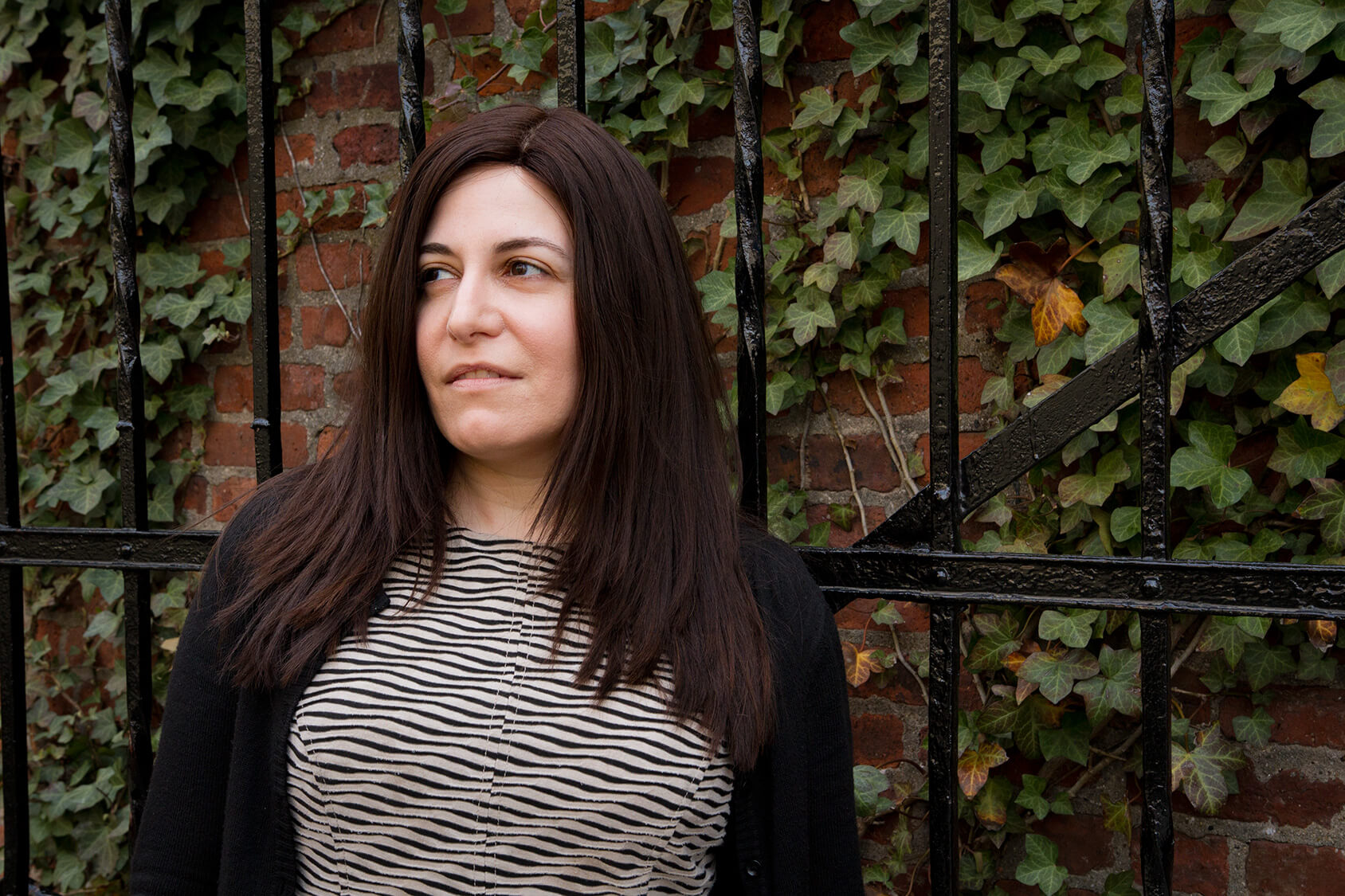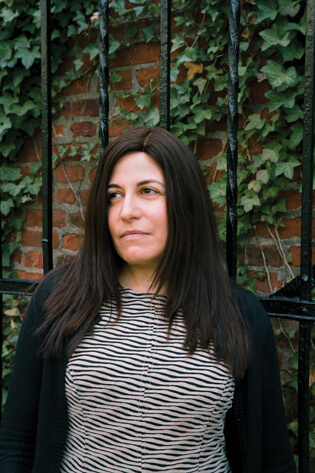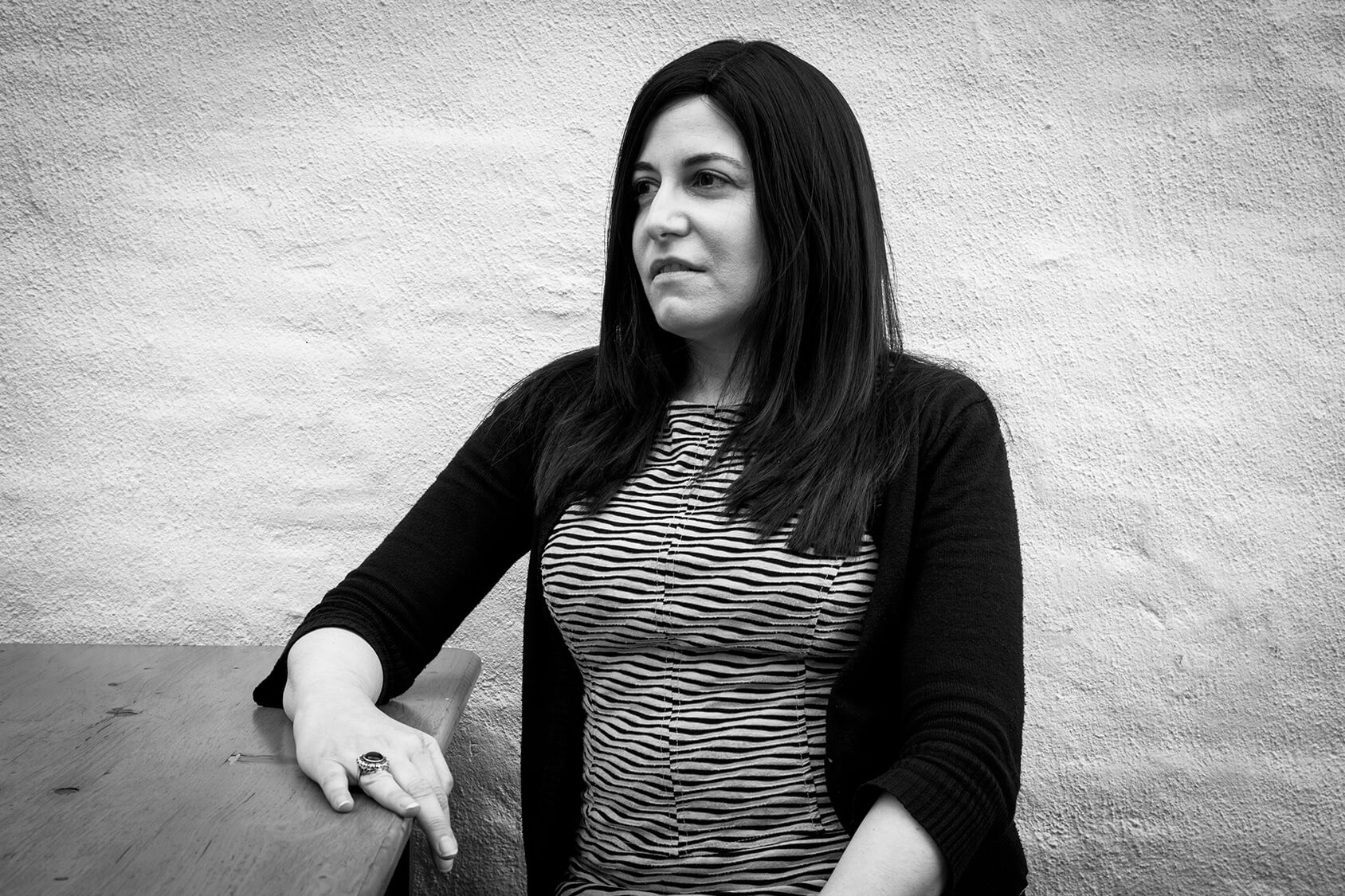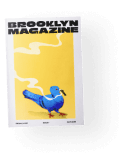Meet Penina Roth, the Unassuming Heart of Literary Brooklyn

Penina Roth knows nearly everyone in Manhattanville Coffee on Rogers Avenue. It’s only a few blocks from her home—she’s lived in Crown Heights since 1994—but it’s also the venue for her latest project: the Manhattanville Reading Series. “There’s a really long waiting list,” she says of the wildly successful Franklin Park Reading Series, which she founded in 2009, and which has become her calling card. She created the Manhattanville series, which highlights writers who have yet to publish a book, because, she says, “I felt like I was neglecting emerging writing.” This generosity of spirit (and of time and energy) is typical of Roth, who—although she describes herself as an outsider—is the Brooklyn’s literary community’s unassuming heart.
Both in and outside of literary circles, it’s not hard to find people who hate readings. Though New York is blessed with bookstore event coordinators and series curators who regularly turn the stereotype on its head, there are few things worse to sit through than a bad reading. Poets for whom every line break is a question, American writers who for unknown reasons read only in faintly British accents, authors who display a flagrant disregard for time (and their audience), mumblers: It can be excruciating. And when failure is both expected and it’s cost so high, pulling off a genuinely fun reading is all the more impressive. But running what has been—for years—the best reading series in New York City? That’s a tremendous achievement.
“Sometimes people are negative about reading series, saying no one likes them,” says novelist Alexander Chee, a two-time veteran of the series, “but every time I go to Franklin Park, it’s standing room only. Everyone listens quietly through the whole thing, has fun, and cheers like crazy at the end.”
“Every month you know she’ll have a full house because she’s always landed the best readers,” says novelist Jami Attenberg, who read at the third ever Franklin Park Reading Series event in 2009, and has returned twice since. “The end result is she’s become something of a tastemaker. Even if I can’t make it to the series I can always get a sense of which authors people will be talking about that month based on who will be reading.”
She’s not just good in terms of who she chooses but also how she groups the writers. Each evening is a little like an issue of a literary magazine as a result.
Though Roth was born in Brooklyn, she was six weeks old when her family moved away. An army brat—her father, a Modern Orthodox rabbi, served as a chaplain—Roth spent her childhood spread out across the country, from Staten Island to Washington State. She talks about the military as a conduit for social mobility, a path to greater socioeconomic status. In particular, she’s grateful for the heterogeneity of her upbringing. “If you were to take a poll of army brats, you’d find they were more open-minded” than the average person, she explains. And in addition to open-mindedness, there’s adaptability. “You’d find chameleons.”
Roth returned to New York City for school: she attended both the Fashion Institute of Technology and Hunter College. “I was always pulled in two directions, fashion and writing,” she says. She’s embarrassed of her indecision, but it speaks to the variety of her strengths. What Roth does so well at Franklin Park is harness her multiple skills—she does the work of both an editor, in selecting and organizing literary content, and a ringmaster, in putting on a successful show.
After school, she says, “I moved to Los Angeles—you have to understand how delusional I was—to be a screenwriter. I only had 50 pages of a script.” But Roth quickly found a place in Hollywood, first working in a production office and eventually becoming a wardrobe stylist. “I didn’t realize that job existed,” she said, but once she found it, it fit. She ended up working with prolific music video director Lionel Martin as an assistant stylist on videos for Color Me Badd, Another Bad Creation, among others. “The highlight was working with Stevie Wonder” on the video for “Fun Day.” She admits that being an assistant stylist is “a really schleppy position. You’re picking up clothing, steaming it, bringing it to the cleaners,” but she also recalls the glamour, and the outsize budgets, of the time. “Tens of thousands of dollars were spent on clothes, especially in rap videos.”
Eventually Roth was offered a job with costume designer Arianne Phillips, who would go on to be nominated for two Oscars. “But they wanted me to work on Saturdays,” Roth explains, “and I couldn’t do it.” It was one of many scheduling conflicts—the 24/7 demands of film productions coming up against Roth’s religious obligations—that helped her decide to leave the industry.
Though she was raised in a Modern Orthodox family, Roth found herself attracted to the Chabad-Lubavitch community while living in Los Angeles. She had been familiar with the branch of Hasidism since childhood. One of her father’s friends, Jacob Goldstein, was a Lubavitcher. Roth connected with Goldstein’s sister on the West Coast. “The community was very welcoming and supportive,” she says. “Its juxtapositions attracted me.”
“The adherents I encountered were very enthusiastic and knowledgeable about their practice, yet still very open-minded about my contradictory lifestyle,” she adds, “which involved stuff like working on an all-day photo shoot in Joshua Tree, then racing back to LA before sundown to make it in time for Sabbath candlelighting.”


In 1994, family and a job organizing finance conferences (which, if less creative, had regular hours) prompted a move back to Brooklyn. She arrived in Crown Heights, the headquarters of the Chabad-Lubavitch movement.
“It was very difficult when I first moved here,” Roth says. “I was used to hanging out with a crowd that was very artsy. It was a much more traditional, conservative community. A friend warned me, ‘You can’t wear those tights in Crown Heights,’” in reference to a pair of black and white–striped, Wicked Witch of the East–style stockings Roth often sported around LA.
She had lived in Crown Heights for six years before getting involved in New York’s literary scene, first by going to readings in bookstores and then by signing up for classes with the Gotham Writers Workshop. She began to write, covering primarily local news, for the New York Times, the Post, The Forward, The Jewish Week, the Los Angeles Jewish Journal, among others. She watched, with pleasure, the rise of the Orthodox Jewish music scene in the mid-2000s, with artists like Matisyahu, Heedoosh, häMAKOR—many of whom played at Southpaw, a Park Slope bar (now defunct) co-owned by Matthew Roff, who went on to open Franklin Park.
As a local reporter and a longtime resident, Roth was primed to notice the first signs of change in both her religious community and her neighborhood. “I was so excited when people were moving here in 2008,” she says, referring to the influx of college-educated, non-native New Yorkers. She’d go up to strangers on the subway platform reading literary fiction just to talk to another bookworm. “I really was crazy,” she laughs. When Franklin Park opened that same year, Roth saw the new bar as a genuine melting pot. These elements—a revitalized Jewish arts scene, an influx of literary-minded newcomers, and a neighborhood bar where all felt welcome—were the ingredients Roth needed to make something new of her own.
In March 2009, Matthue Roth, Liza Monroy, and David Goodwillie (who Penina had first contacted through a MySpace fan letter) read at the inaugural evening of the Franklin Park Reading Series.
Roth had convinced the bar’s owners, Matthew Roff and Anatoly Dubinsky, to let her host a one-off reading. About 40 people showed up, and they bought enough beer to convince Roff and Dubinsky to have her back every second Monday of every month for the past seven years.
“It was a lot different,” Matthue Roth says of that first night. “For one thing, you could actually breathe. I think there might have even been seats available.” But one thing that has remained the same is the quality and diversity of the writing presented. “It was nothing like most of the readings I was going to at the time, which were mostly all novels about rich white couples.”
Franklin Park today is significantly more crowded, he says. “I don’t just mean that to be nice. It’s crazy packed.” (“I feel like a failure if there’s less than 100 people,” Penina Roth confesses separately.)
“I really appreciate a series organizer who is prepared to sell my book, who introduces me enthusiastically and fully instead of clumsily or sarcastically or with some half-assed joke,” Alexander Chee says. “Reading takes a night out of my life that I never get back and asks me to represent for my own work, work I’ve sacrificed a great deal to create. So to be met by someone who gets that and sets me up to have a great night—that means the world to me.”
Franklin Park has served as an important launch pad for emerging writers; in 2011, the then relatively unpublished Matt Sumell read a story, “Toast,” he said had been rejected by several literary magazines. When he offered to end his reading mid-narrative, to respect his allotted time, the audience cheered him on to finish. After the L Magazine mentioned his performance in a write-up, Sumell decided to resubmit the story. It ended up in the 200th issue of the Paris Review, a magazine that had initially rejected it. His first book, Making Nice, came out in 2015.
Franklin Park’s big, boisterous audience is just as willing to take risks as its readers. Sam Lipsyte pulled off a 45-minute long reading of (an abridged version of) one of his short stories in 2012—and he was the last of five readers that night. The audience was rapt.
Roth characterizes the aesthetic of Franklin Park as “language-driven, voice-driven, innovative in structure and narrative, with subject matter and themes that are riskier, more transgressive.” The series has born witness to three (literary) ménage à trois, she says. “Our readers feel freer to read different material,” she explains, then they might at a more traditional reading. Roth credits this focus in part to HTML Giant’s Blake Butler. “Through reading HTML Giant, I discovered this whole world of indie lit.”
A diverse and inclusive lineup is also essential, and Roth puts a special emphasis on writers who reflect Crown Heights’ long-term residents, both Hasidic and Caribbean-American. Haitian-American novelist Edwidge Danticat, who read at the series in 2013, went to high school in the neighborhood. Her brother still lives in Crown Heights and is a Franklin Park regular. But bringing in writers of color isn’t enough. “Someone may look at a flyer and say that’s not for me,” she says. “You have to reach out.”


“Penina is amazing at putting together a completely diverse set that somehow also matches up in an oblique way,” says Butler, “keeping the night cohesive while also often wildly varied.”
“She’s not just good in terms of who she chooses but also how she groups the writers,” Chee says. “Each evening is a little like an issue of a literary magazine as a result.”
“I personally hate the word hipster,” Roth tells me. “It’s a pejorative.” She prefers to refer to the oft-demonized Brooklyn demographic as “recent transplants.”
“Gentrification is also a horrible word,” she continues. “Young Lubavitcher and young transplants actually have a lot in common.” She describes the thrill she feels when she sees young Hasidim come to Franklin Park readings on dates. Roth points to these stories as proof of Franklin Park’s still-diverse draw. But there’s no doubt that Crown Heights has changed radically since the series first began in 2009.
In a 2008 story for the New York Sun, Roth wrote about the shifts already underway in the neighborhood. She quoted Franklin Park co-owner Roff on the fate of Franklin Avenue: “Over the next five years,” he predicted, “it’s going to become like Boerum Hill’s Smith Street or Park Slope’s Fifth Avenue.” In that same story, Roth reported the median rent for a one bedroom in Crown Heights as $1,200. By 2016, it had risen to $3,100, according to a report from Trulia. Only someone with no concept of what numbers are would not immediately see the results of that equation. When rents nearly triple in under a decade—people, a lot of them, get priced out. For nearly every measurable positive change or addition, there’s difficult-to-calculate, but immense, human loss.
Penina is amazing at putting together a completely diverse set that somehow also matches up in an oblique way, keeping the night cohesive while also often wildly varied.
Ultimately Roth characterizes the changes the neighborhood has undergone as “the revival of Crown Heights”—one made possible by the coexistence of Chabad, Caribbean, and transplant communities. The neighborhood’s (and so also the reading series’) success, she says, “couldn’t have happened in another Hasidic community.”
“She picked the right bar in the right neighborhood just before it exploded,” Jami Attenberg says. “People always say you can tell a neighborhood is changing when someone opens a bookstore there, but maybe the same could be said of someone starting a reading series?”
But Roth’s impact is felt far beyond the limits of Crown Heights. “I have met very few people as devoted to the Brooklyn literary community as Penina,” Attenberg adds. Chee credits her in part for the enormous growth of New York City literary culture over the past decade.
“She’s still something of an outsider in a scene full of self-proclaimed outsiders,” he adds, “but everyone makes sure she gets a galley.”
You might also like 



















